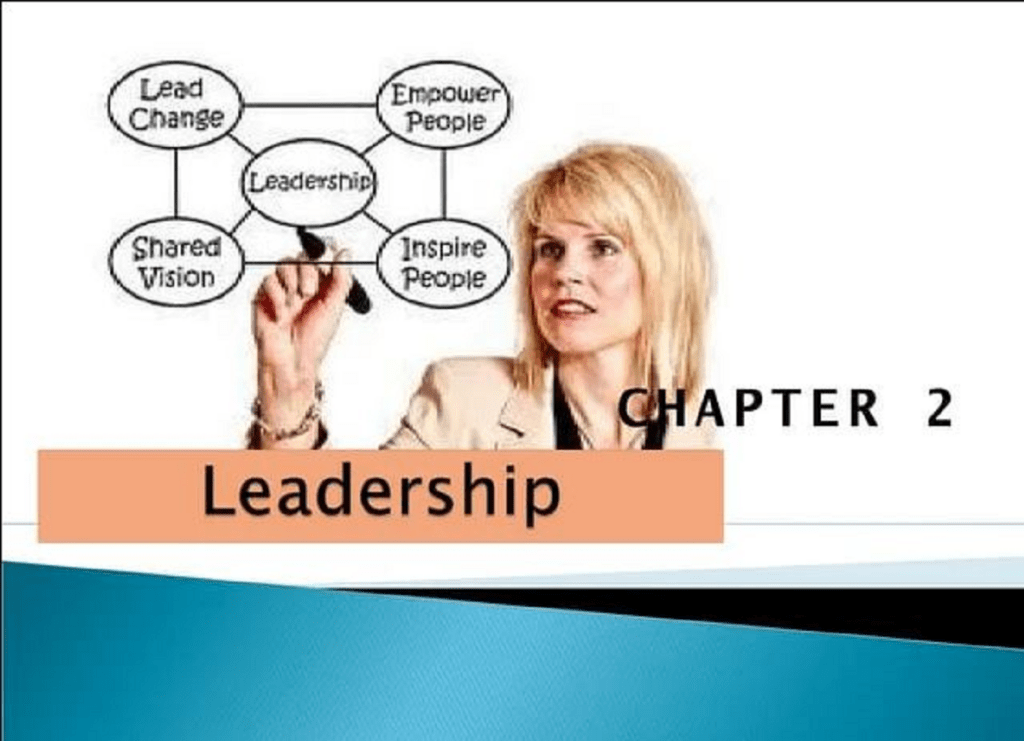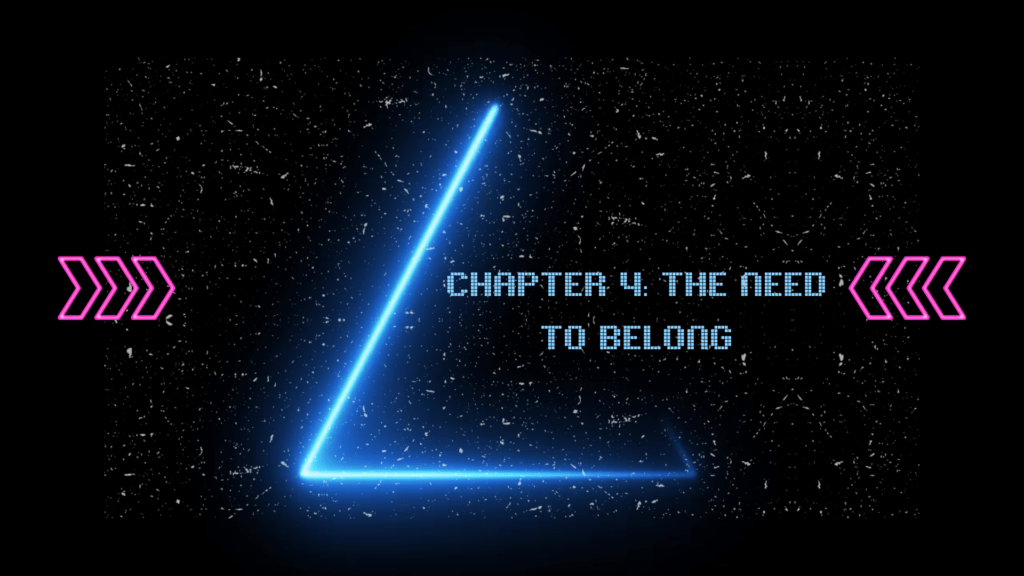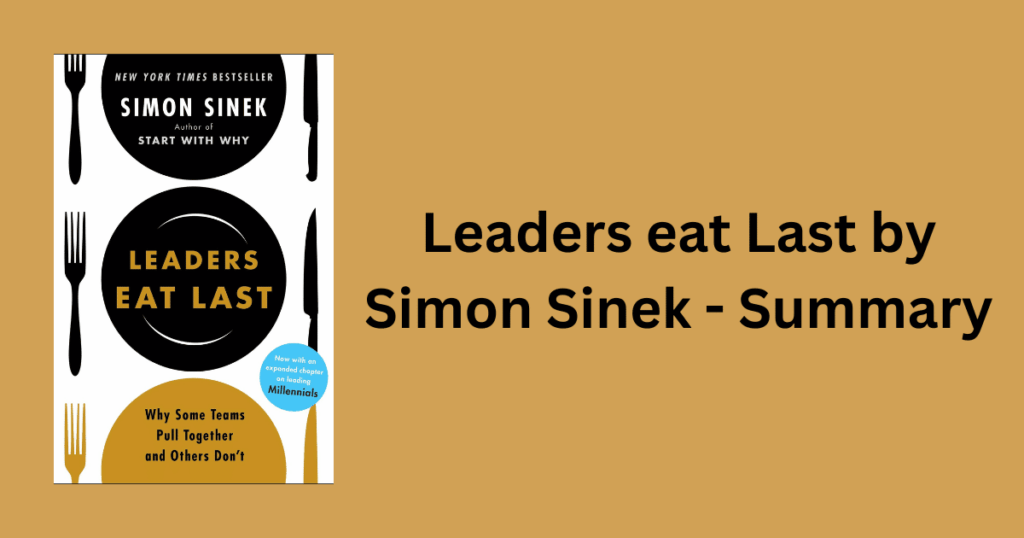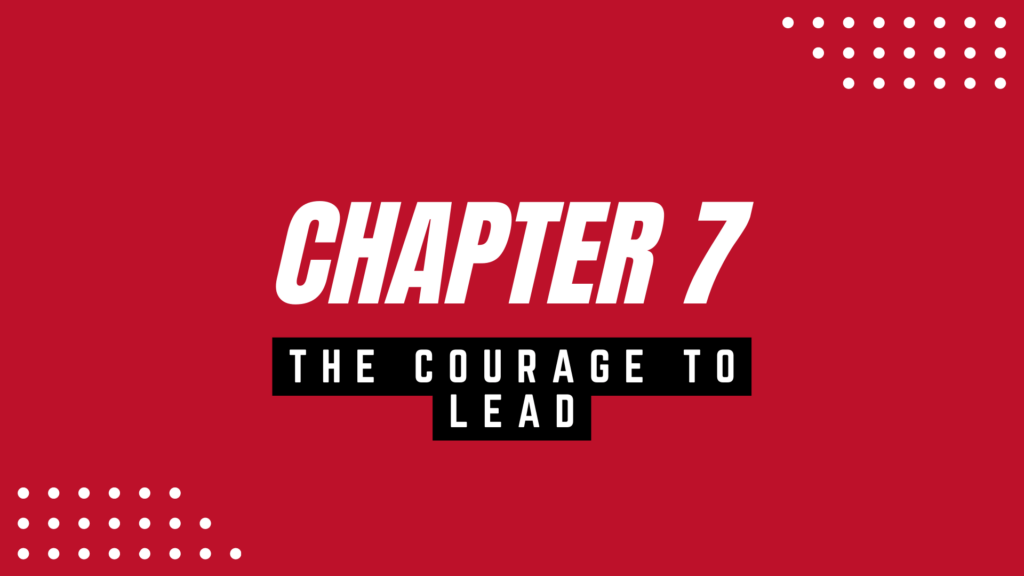Leaders Eat Last: Introduction
Leadership is a timeless concept that has intrigued and inspired individuals for centuries. In the book “Leaders Eat Last” by Simon Sinek, we embark on a journey to explore the essence of leadership and the fundamental principles that enable leaders to create remarkable teams and organizations. Sinek, a renowned author and speaker, delves into the intricacies of leadership, presenting a refreshing perspective that goes beyond titles and authority.
In this captivating book, Sinek explores the notion that great leaders prioritize the well-being and success of their team above all else. Drawing from scientific research, historical context, and real-life examples, Sinek skillfully weaves a narrative that challenges traditional leadership models and offers a compelling vision of what it means to be a true leader. With eloquent prose and thought-provoking insights, “Leaders Eat Last” ignites a sense of purpose and instills a desire to create an environment where trust, collaboration, and empathy thrive. As we dive into this book, we are compelled to reevaluate our own leadership styles and discover how we can make a lasting difference in the lives of those we lead.
Find Comprehensive Chapter Wise Summary of 200 Influential Business Books Like Leaders Eat Last here
Leaders Eat Last: About the Author
Simon Sinek, renowned author, speaker, and leadership expert, has made a profound impact on the business world with his unique perspectives and approaches. Drawing upon his extensive research and experiences, Sinek has gained global recognition for his ability to inspire leaders to uphold values of integrity and empathy. His writing style is characterized by its blend of scientific evidence, real-life examples, and storytelling, making complex concepts accessible and engaging to readers. Sinek’s unwavering belief in the power of leadership to bring out the best in individuals and organizations shines through every word he writes, leaving a lasting impression on his audience. Prepare to be enlightened and inspired as you delve into the remarkable insights offered by Simon Sinek in “Leaders Eat Last.”
Leaders Eat Last: Chapter-wise Summary
Chapter 1: Introduction
In the first chapter of “Leaders Eat Last,” Simon Sinek sets the stage for his exploration of leadership and the importance of creating a culture that fosters trust and collaboration. He introduces the concept of the “circle of safety” and highlights the inherent human need for safety and protection. Sinek suggests that great leaders prioritize the well-being of their team members and create an environment where they feel safe and valued.
In the first chapter of “Leaders Eat Last,” Simon Sinek introduces the concept of the “circle of safety” and emphasizes the importance of creating a culture that prioritizes the well-being of team members. He highlights that great leaders are willing to sacrifice their own interests for the greater good and cultivate an environment where individuals feel safe, valued, and supported.
Sinek states, “Great leaders are willing to sacrifice their interest for the good of the group“. This quote highlights the selflessness and bravery that true leaders possess as they prioritize the needs of their team over their own.
He also emphasizes, “The true price of leadership is the willingness to place the needs of others above your own” . This quote elucidates the mindset of a leader who prioritizes the well-being of their team members and understands the inherent responsibility of leadership.
Sinek further explains the importance of culture and relationships in creating a sense of safety within an organization. He highlights, “In an organization, that protection comes from the nurturing of the culture and the values that define the organization. It also comes from the relationships built and the care given by those with whom we work“.
Chapter 1 serves as the foundation of the book by introducing the key concept of the circle of safety and setting the stage for the exploration of effective leadership strategies.
Find Comprehensive Chapter Wise Summary of 200 Influential Business Books Like Leaders Eat Last here
Chapter 2: The Biology of Leadership

Sinek delves into the science behind leadership in this chapter, discussing the role of chemicals in our brains that influence our behavior and decision-making. He explains how the release of oxytocin, a hormone associated with feelings of love and trust, plays a crucial role in building strong relationships and enhancing team performance. By understanding the biological basis of leadership, we can better grasp the importance of creating an environment that promotes trust and fosters positive relationships.
In Chapter 2 of “Leaders Eat Last,” Simon Sinek delves into the biology behind leadership and how it influences our behavior and decision-making. He explains how our brains release certain chemicals that impact our interactions with others and contribute to our sense of trust and collaboration.
Sinek states, “It’s not the feeling of being in love that gives us the oxytocin; it’s the feeling of being loved” . He highlights the importance of feeling valued and cared for in order to foster trust within a team. Leaders who prioritize creating an environment of love and support enable the release of oxytocin, a hormone associated with feelings of trust and loyalty.
Furthermore, Sinek explains that serotonin, another chemical in our brains, plays a significant role in social hierarchies. He writes, “Serotonin rises and falls given our perception of how others perceive us“. This means that leaders who prioritize their own success and status over the well-being of their team may inadvertently create a culture of insecurity and anxiety.
Sinek also explores the impact of dopamine, a chemical associated with reward and motivation. He states, “When dopamine is released into the brain, we feel good and our ability to think creatively and problem solve improves“. Leaders who provide meaningful recognition and reward their team members when they achieve success can boost their dopamine levels and enhance their performance and innovation.
By understanding the biological basis of leadership and the chemicals that influence our behavior, leaders can begin to create environments that foster trust, collaboration, and high performance. Sinek emphasizes that great leaders prioritize the well-being of their team members and create cultures that elicit the release of oxytocin, serotonin, and dopamine, ultimately creating organizations where everyone can thrive.
Find Comprehensive Chapter Wise Summary of 200 Influential Business Books Like Leaders Eat Last here
Chapter 3: The Evolution of Leadership
In this chapter, Sinek examines the historical context of leadership and how it has evolved over time. He contrasts two leadership models – the traditional, command-and-control style, and the more modern, servant leadership approach. Sinek emphasizes that great leaders prioritize the well-being of their team members and are willing to sacrifice their own interests for the greater good. By adopting a more empathetic and supportive leadership style, we can inspire and motivate our teams to achieve extraordinary results.
In Chapter 3 of “Leaders Eat Last,” Simon Sinek delves into the evolution of leadership, highlighting the stark contrast between traditional command-and-control leadership and the more progressive servant leadership approach. He illustrates that throughout history, leadership has undergone significant changes, with a growing emphasis on empathy and the well-being of employees.
Sinek states, “To be a leader one must offer others something. They must provide a vision of a future and inspire others to come on the journey“. He explains that great leaders are not just focused on their own success but on the success of their team as a whole. They strive to create a culture of trust and collaboration, where everyone feels valued and motivated to contribute their best.
The author goes on to emphasize the importance of prioritizing the needs of the team and setting aside personal interests. Sinek writes, “The true price of leadership is the willingness to place the needs of others above your own. Great leaders truly care about those they are privileged to lead and understand that the true cost of leadership is self-interest“.
Sinek contrasts this approach with the traditional command-and-control leadership style often associated with hierarchical structures. He states, “Command-and-control leaders are like a vending machine. They give out what’s expected, but people are left feeling empty and unsatisfied“. This evocative comparison highlights the dissatisfaction and lack of fulfillment that often come with a leadership style focused solely on power and control.
The author then introduces the concept of servant leadership, which revolves around the idea of leaders being selfless and serving the needs of their team. Sinek explains, “Leadership is not about being in charge. It is about taking care of those in your charge“. He emphasizes that great leaders prioritize the well-being and development of their team members, taking on the responsibility of creating an environment that fosters growth and success.
To drive his point further, Sinek includes the following quote from senior military officers he interviewed: “Rank has its privileges, but it also obliges us to give people what they need. When we get home, our sacrifice is supposed to be over. If we don’t give people what they expect, they will never trust us and will never give us all they’ve got“.
In this chapter, Sinek encourages leaders to adopt a more empathetic and servant-like approach to leadership, putting the needs of their team before their own. By doing so, leaders can inspire loyalty, trust, and unprecedented levels of team performance.
Find Comprehensive Chapter Wise Summary of 200 Influential Business Books Like Leaders Eat Last here
Chapter 4: The Need to Belong

One of the fundamental needs of humans is the desire to belong and be part of a community. Sinek explores this need in detail, illustrating how it directly impacts our sense of fulfillment and engagement in the workplace. He stresses the importance of creating a culture of inclusion and belonging, where everyone feels valued and connected to the larger purpose. By fostering strong relationships and a sense of belonging, leaders can create a motivated and high-performing team.
In Chapter 4 of “Leaders Eat Last,” Simon Sinek explores the fundamental human need to belong and be part of a community. He highlights the importance of creating a culture of inclusion, where everyone feels valued and connected to the larger purpose. Sinek emphasizes that when individuals feel a sense of belonging, they are more engaged, motivated, and willing to contribute their best efforts to the team.
Sinek writes, “We do not feel safe when we feel alone. All our primitive alarms go off when we perceive that we are alone“. This quote emphasizes the inherent human instinct to seek connection and avoid isolation. As leaders, it is vital to foster an environment where team members feel supported and part of a cohesive community.
Furthermore, Sinek explains, “The power of the group simply cannot be compared to that of the individual. They do not have the same influence on our feelings, on our sense of purpose, on our willingness to give and receive trust“. This statement underscores the significance of creating a strong sense of belonging within a team. By recognizing and prioritizing the power of the collective, leaders can cultivate a culture of collaboration and teamwork.
Sinek also explores the concept of the “tribe” and its impact on fostering belonging. He states, “Strong ties within a tribe give us a sense of belonging, and the trust that comes from the tribe looking after each other is part of what gives us the confidence to explore the unknown rather than huddle together in fear“. This quote highlights the importance of building strong relationships within a team, as it not only fosters a sense of belonging but also creates a supportive environment where individuals can take risks and innovate.
In conclusion, Chapter 4 of “Leaders Eat Last” emphasizes the need for leaders to create a culture of belonging within their teams. By acknowledging and addressing this innate human need, leaders can inspire greater engagement, trust, and collaboration among team members. Fostering a sense of belonging is crucial for building strong relationships and creating an environment where everyone feels valued and supported.
Find Comprehensive Chapter Wise Summary of 200 Influential Business Books Like Leaders Eat Last here
Chapter 5: The Hormone of Leadership
Taking a closer look at the role of hormones in leadership, Sinek focuses on the impact of cortisol, a hormone linked to stress and anxiety. He explains how leaders who create environments that induce chronic stress can hinder productivity and damage the overall well-being of their team. Sinek encourages leaders to prioritize stress reduction strategies, such as providing clear expectations, fostering open communication, and offering support. By minimizing the presence of cortisol, leaders can create a healthier and more productive work environment.

In this chapter, Sinek takes a deep dive into the impact of cortisol, a stress hormone, on leadership and team performance. He argues that leaders who create environments that induce chronic stress can hinder productivity and damage the well-being of their team. Sinek emphasizes the need to understand the effects of cortisol and offers strategies for minimizing its presence in the workplace.
Sinek writes, “When we feel safe and protected amongst our peers, we can redirect our attention and energy from ourselves and toward external goals, knowing that our backs are covered. This feeling of safety releases serotonin, a hormone that boosts our mood and creates a sense of well-being“. He highlights the importance of creating a culture of safety and trust, as it promotes the release of positive hormones like serotonin, which enhance team morale and performance.
Furthermore, Sinek explains how chronic stress and the constant release of cortisol can hinder our ability to think clearly and make rational decisions. He states, “When cortisol is pumped into our system, it is more difficult for us to control our impulses and our ethical compasses. It is harder for us to think creatively and rationally“. This underscores the negative impact of chronic stress on not only individual well-being but also on the overall functioning and productivity of a team.
To address this issue, Sinek suggests that leaders must prioritize stress reduction strategies. He offers practical solutions such as setting clear expectations, providing support and resources, and fostering open communication. Sinek emphasizes the importance of leaders taking responsibility for creating an environment that minimizes stress, stating, “Leaders who genuinely care about the well-being of their people are willing to invest in creating a safe environment“.
In conclusion, Chapter 5 of “Leaders Eat Last” sheds light on the harmful effects of chronic stress and the release of cortisol in the workplace. Sinek urges leaders to recognize the impact of stress on their team’s well-being and overall performance. By prioritizing stress reduction strategies and creating a culture of safety and trust, leaders can minimize the presence of cortisol and promote a healthier and more productive work environment.
Find Comprehensive Chapter Wise Summary of 200 Influential Business Books Like Leaders Eat Last here
Chapter 6: Leading with Empathy
In this chapter, Sinek emphasizes the importance of empathy in leadership. He argues that empathy is not a weakness but rather a crucial skill for building strong relationships and effective teams. Sinek introduces the concept of mirror neurons and explains how they contribute to empathy and understanding the emotions of others. He shares real-life examples of leaders who have used empathy to foster trust and loyalty among their team members. By actively listening and demonstrating genuine care, leaders can create a culture of empathy and collaboration.
In Chapter 6 of “Leaders Eat Last,” titled “Leading with Empathy,” Simon Sinek emphasizes the crucial role of empathy in effective leadership. He argues that empathy is not a weakness but rather a powerful tool for building strong relationships and creating a culture of trust and collaboration. Sinek explores the science behind empathy and provides examples of leaders who have successfully incorporated empathy into their leadership style. Let’s delve deeper into this chapter, highlighting some exact quotes from the book:
1. “Empathy is not an instruction manual; it’s a skill we must practice.” Sinek emphasizes that empathy is not something we are born with, but rather a skill that can be developed and honed. It requires active practice and a genuine desire to understand and connect with others.
2. “The moment we ignore someone’s warning or pretend that it doesn’t matter, we are essentially saying we don’t care.” Sinek illustrates the importance of listening to the concerns and warnings of others. By dismissing or ignoring their input, leaders undermine trust and diminish the sense of safety within the team.
3. “The more empathetic we are, the more people can trust that we stay true to our values, even in tough times.” Sinek highlights the connection between empathy and trust. When leaders demonstrate empathy consistently, team members feel safer and more secure, knowing that their leader will prioritize their well-being, even in challenging circumstances.
4. “The goal is not to be fearless in the face of adversity. The goal is to care so much about others that we do not intentionally make their lives worse.” Sinek challenges the notion of fearlessness in leadership, arguing that it is more important to prioritize the well-being of others. Great leaders recognize that their decisions may impact the lives of their team members and strive to minimize any negative consequences.
5. “An empathetic leader is not an indecisive leader; quite the contrary. An empathetic leader has the courage to make the tough decisions.” Sinek debunks the misconception that empathy and decisiveness are mutually exclusive. He explains that empathetic leaders can still make difficult decisions, but they do so with consideration for the impact on others and communicate their choices with compassion.
6. “Listening is not just being quiet while the other person speaks. It is an active process that includes paying attention to nonverbal cues, making eye contact, and ensuring that the person feels heard.” Sinek emphasizes the importance of active listening in cultivating empathy. It involves being fully present, observing nonverbal cues, and making the other person feel valued and understood.
By incorporating empathy into their leadership approach, leaders can create a work environment where team members feel heard, understood, and supported. Sinek’s insights in this chapter encourage leaders to cultivate empathy as a skill and make it an integral part of their leadership philosophy.
Find Comprehensive Chapter Wise Summary of 200 Influential Business Books Like Leaders Eat Last here
Chapter 7: The Courage to Lead

In the final chapter, Sinek discusses the role of courage in leadership. He emphasizes that true leadership requires the bravery to make difficult decisions and take risks, especially when it comes to the well-being of your team. Sinek challenges leaders to stand up against unethical practices and prioritize the long-term success and happiness of their employees. He urges leaders to have the courage to lead with integrity, even in the face of adversity.
In the final chapter of “Leaders Eat Last,” Simon Sinek emphasizes the crucial role of courage in leadership. He challenges leaders to have the bravery to make difficult decisions and take risks for the well-being of their team. Sinek highlights that true leadership requires the courage to stand up against unethical practices and prioritize the long-term success and happiness of their employees.
Sinek writes, “Leaders who are more interested in protecting their own interests and advancing their own careers than protecting their team need not identify themselves as leaders“. This quote illustrates Sinek’s belief that self-serving leaders are not true leaders. Instead, leaders must have the courage to prioritize the needs of their team above their own.
He further argues, “It is better to be temporarily uncomfortable than to cause long-term damage to those who depend on us” . This statement highlights the importance of making difficult decisions. Leaders must be willing to step out of their comfort zones and make choices that may be uncomfortable in the short term but ultimately benefit the well-being and success of their team in the long run.
Sinek also stresses, “Leadership means sacrificing oneself for the greater good. It means having the courage to do what is right, regardless of fear or personal consequences” . Here, he emphasizes the selfless nature of leadership and the need for leaders to prioritize doing what is right, even if it means facing personal challenges.
In conclusion, “Leaders Eat Last” reinforces the idea that true leadership requires courage. Leaders must have the bravery to make tough decisions, protect their team, and act with integrity, even in the face of adversity. By showcasing examples of courageous leadership, Sinek inspires readers to lead with conviction and make a positive impact on their team and organization.
Find Comprehensive Chapter Wise Summary of 200 Influential Business Books Like Leaders Eat Last here
Leaders Eat Last: Conclusion
“Leaders Eat Last” offers a refreshing perspective on leadership, emphasizing the importance of creating a culture of trust, empathy, and collaboration. Sinek’s exploration of the biological and historical aspects of leadership provides valuable insights into what it truly means to be a great leader. This book serves as a reminder that leadership is not about power or authority, but about serving others and creating an environment where everyone can thrive
Samrat is a Delhi-based MBA from the Indian Institute of Management. He is a Strategy, AI, and Marketing Enthusiast and passionately writes about core and emerging topics in Management studies. Reach out to his LinkedIn for a discussion or follow his Quora Page

